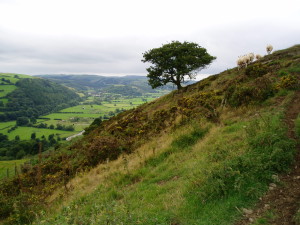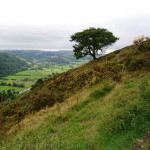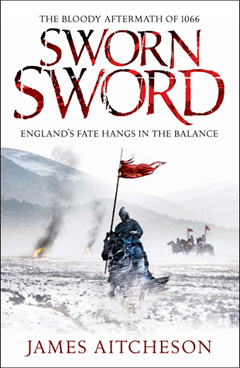Earlier this year I launched a new feature on this website to offer you, my readers, an extra insight into the world of the Conquest Series. Entitled Tancred’s England, the idea is to share with you some of the research that goes into writing the novels, by exploring the history of some of the key locations visited by Tancred in the course of his saga.

View over River Teme valley, from Offa’s Dyke Path, north of Knighton.
It’s a part of Britain that’s particularly rich in history, much of which can be freely accessed today. Ancient hill-forts, ruined castles and abbeys all abound, while for 64 miles the great Anglo-Saxon earthwork known as Offa’s Dyke cuts across this striking landscape. Named after the eighth-century Mercian king who is traditionally thought to have ordered its construction, the Dyke delineated the default boundary between England and Wales throughout much of the Middle Ages, and even after 1,200 years it remains a powerful symbol of Offa’s authority.

The cover for the US edition of
The Splintered Kingdom, due to be published by Sourcebooks Landmark
on August 5th, 2014.
I’ll be adding more entries in due course. One of those in the pipeline is about the city of Durham, where Tancred’s tale begins on that cold winter’s night in January 1069. As always, if you have any suggestions for places I could feature in future, please don’t hesitate to get in touch via the contact form.












